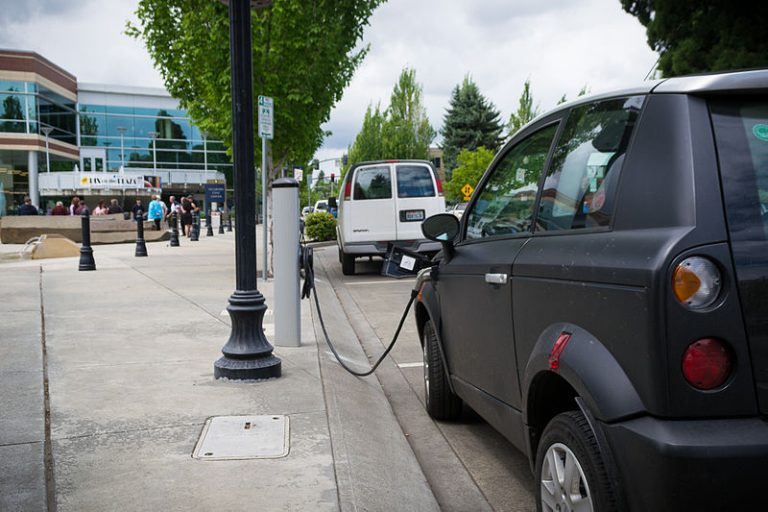Published on May 14, 2021

Originally written by Nives Dolšak, professor at the University of Washington School of Marine and Environmental Affairs and Aseem Prakash, professor at the University of Washington Department of Political Science.
Transportation contributes to about 28% of U.S. carbon emissions. To cut emissions by 50% by 2030, this sector will need to be rapidly decarbonized. Electric Vehicles (EVs) are the key element of this plan. Because EVs are more expensive than internal combustion engine (ICE) vehicles, Biden’s infrastructure plan provides for $100 billion for EV rebates. But the EV challenge extends beyond its sticker price. EV owners must be able to charge their vehicles conveniently and quickly. Biden’s plan provides for additional $15 billion to build 500,000 EV charging stations.
The number of EVs on U.S. roads is projected to increase rapidly in this decade. In 2020, about 300,000 EVs were sold, accounting for about 2% of U.S. new automobile market. However, the cumulative number of EVs on U.S. roads could reach 35 million by 2030. How many charging stations will this require and what sort of challenges will need to be overcome to deliver on this target?
Costs are not the only impediment here. Local regulatory issues and electric grid upgrades also play an important role. Viewed this way, the EV revolution faces important regulatory and technological challenges which require close collaboration among different levels of governments.
Lower prices, helped by federal subsidies, will certainly make EVs more attractive. But drivers may still worry about recharging. Where would they plug in their cars and recharge with speed and convenience?
Consider the process of refueling ICE vehicles. When the fuel is low, the driver pulls into a gas station and refuels in around 3-5 minutes, depending on tank capacity. Since gas stations are everywhere, ICE drivers don’t have range anxiety. But EV owners do have a range anxiety for two reasons. First, there aren’t enough charging stations. Second, it can take a long time to charge EVs.
Thus, long charging time means that chargers have to be in places where people park their cars for extended periods. Homes, apartments, and workplaces are prime locations. The bottom line is that charging EVs poses different challenges in contrast to refueling ICEs. This means that we must rethink the geography of refueling.
Originally written by Nives Dolšak, and Aseem Prakash for Forbes.